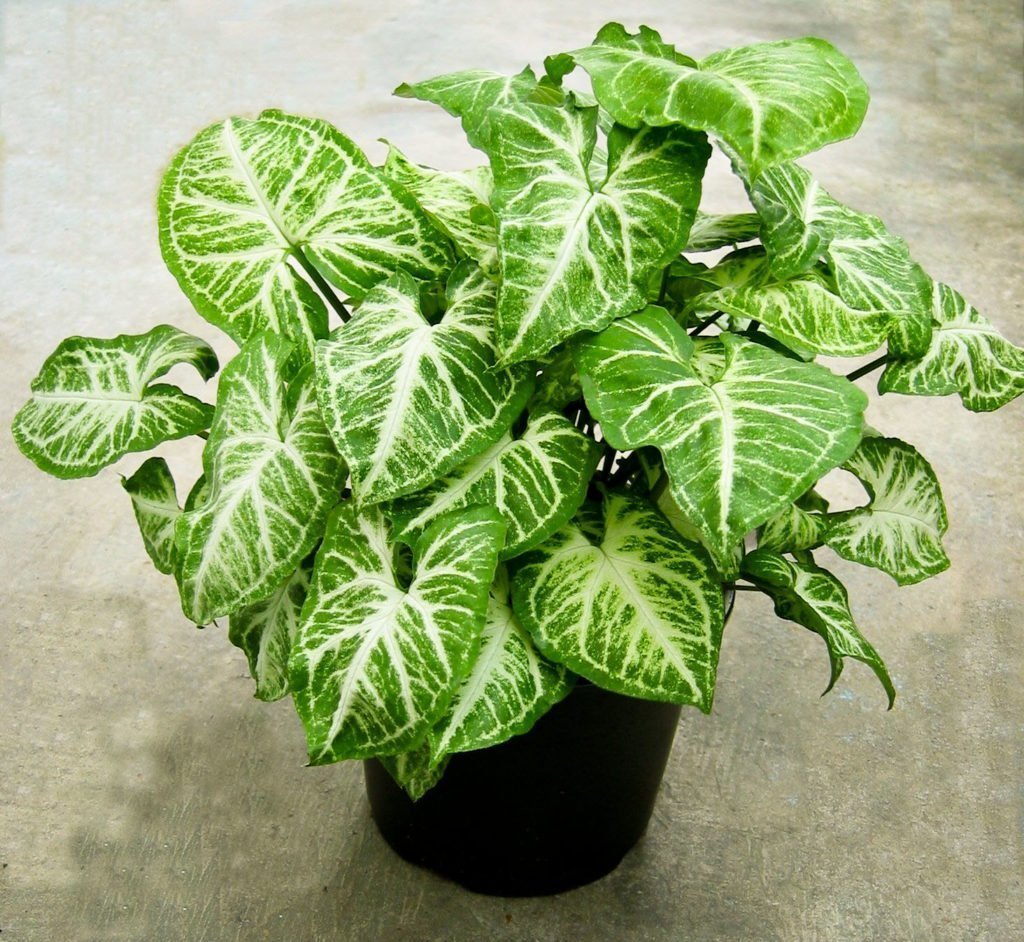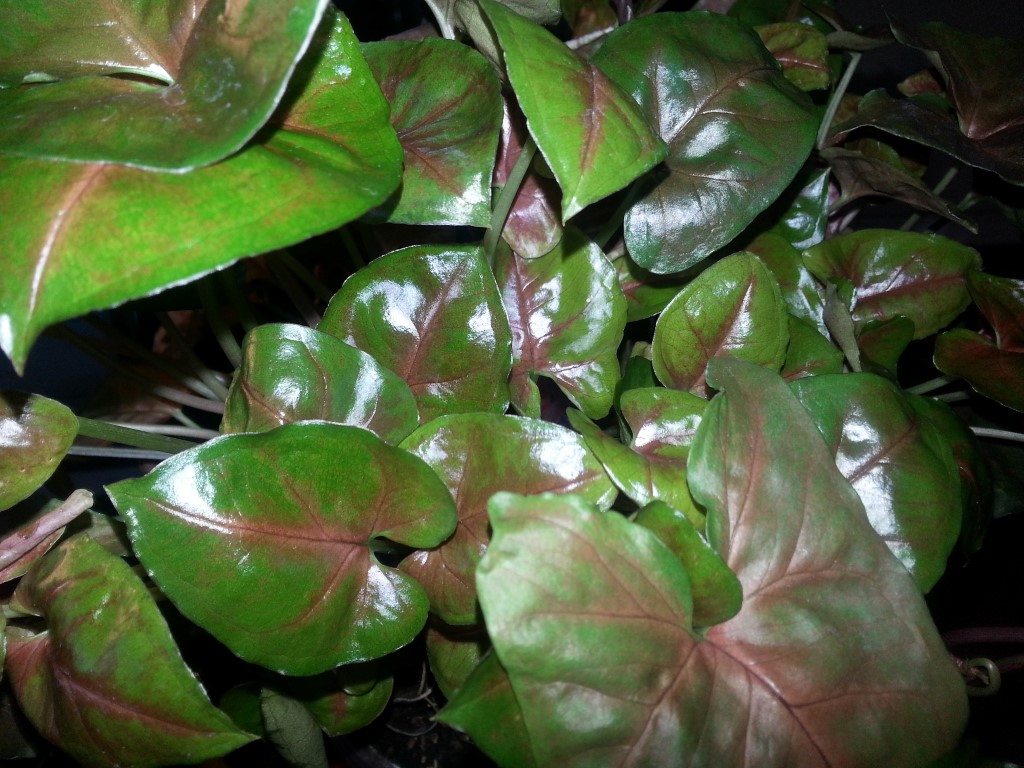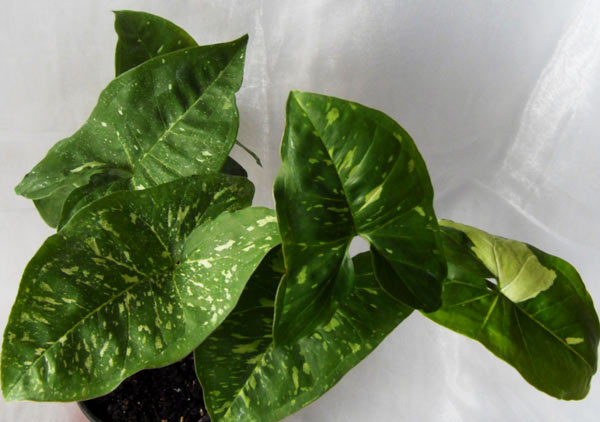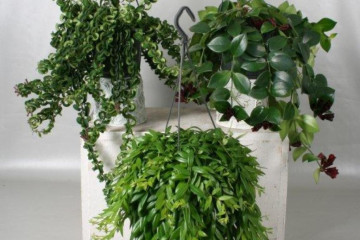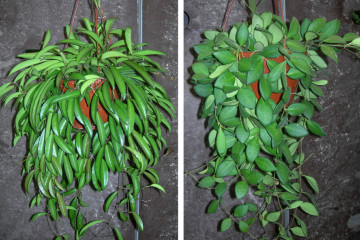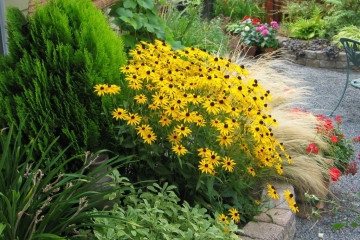Syngonium flower - species and varieties, how it blooms
Content:
The syngonium flower belongs to the Aroid family. He is an evergreen vine. Syngonium is found in South and Central America. The plant is popular among flower growers for its dense and green foliage. The flower helps purify the air and can bring some of the tropics into the house.
Botanical description
The Aroid family, to which the syngonium belongs, has 3300 species and approximately 117 genera. Representatives of this family are monocotyledons. This means that the embryo consists of one lobe. Since this plant grows on other specimens of flora, it belongs to the class of epiphytes.
Wild and indoor plants have only one trunk. Syngonium has a flexible stem, which is colored bright green. The plant spreads on the ground and grasps the support with aerial roots. Shoots can reach a length of 1.5-2 m.Under natural conditions, some vines grow up to 10-20 m in length, and 6 cm in thickness.In indoor plants, the stem is usually 1-2 cm thick. leaves. Aerial roots are below the nodes. These roots are needed to cling to the support.
The leaves are bright green. The heart-shaped part of the leaf is divided into 3-5 segments. There are veins in the center and along the edge, which distinguishes the syngonium from other Aroid species. The side veins connect to the center vein to create a mesh pattern.
Keeping syngonium at home is easy enough. So that there are no questions about why the vine is not growing, it is worth following a few simple requirements:
- water abundantly with clean, settled warm water. However, it is worthwhile to wait between waterings so that the top layer dries out a little. In winter, the plant is watered in smaller volumes;
- observe high air humidity. For this, the leaves are sprayed with settled warm water. In winter, the pot where the liana grows can be placed in a container with damp pebbles;
- before pinching the plant, you need to think about in advance what shape you want to get the flower. You can choose a bush option or make a support and get a vine. In spring, it is necessary to remove bad growth so that there are more branches. For this, pinching is carried out over the sixth sheet;
- the vine is transplanted in the spring. Young plants are transplanted every year, and those that are older, after two years, when the roots become visible from the drain holes;
- the soil should be loose and neutral in acidity. In equal parts sand, leaf and sod land, as well as peat are mixed;
- from April to September, the flower is fertilized with mineral fertilizers, which contain a small amount of calcium. Top dressing is carried out once every 20 days. You cannot fertilize the plant for two weeks after transplanting;
- reproduction is carried out by cuttings. To do this, cut off the top with two nodes and a shoot with a bud. Seedlings are kept in a warm place under glass. After rooting, it can be transplanted.
How syngonium blooms
Syngonium bloom is possible only in natural conditions. The plant begins to bloom from the end of spring and occurs in the form of cobs. There are 6-10 pcs per plant in total. colors.In all varieties, the inflorescences are arranged vertically. The flowers are dense, cream-colored. Half of them are hidden by pinkish or bright red petals. Flowers are odorless. Pollination occurs in a cross-over manner.
First, the flowers of the female type begin to bloom. Their pollination occurs from neighboring inflorescences. When the male-type flowers ripen, the female is no longer susceptible to pollination. The petals close tightly and those insects that get out collect pollen. Then they spread it to the flowers that are in the neighborhood. The vine opens buds only for three days. Then the coverlet covers the ear, which makes it look like an ear.
As a result of such a complex pollination system, fruits ripen. They are cylindrical or ovoid berries. Their edge is rounded. The length of the fruit is 0.5-1 cm, and the width is 3-6 mm. The berries are fragrant and juicy. They are eaten by monkeys who spread them over long distances.
Types and varieties for indoor breeding
Syngonium is classified on the basis of sectional division, which is based on the type of sheet plate. In a plant, adult leaves are divided into equal leaves. There may be three or more of them. There are 35 species of syngonium in total. For a complete listing, see the Royal Botanic Gardens, Kew. Also there are names in Latin.
Different varieties have monochromatic and variegated leaves. They can be of different shades: pink, red, yellow, silver. Over time, the color of the leaves becomes dull, the color of young leaves is more intense.
Some varieties were bred on the basis of auricular syngonium and a leg-leaved syngonium. The most popular among them:
- syngonium pixie. The species is small, belongs to the dwarf type. The color of the leaves is rich and bright. There are dark colors. The leaves are small and heart-shaped;
- syngonium Pink Splash. The plant has green leaves. On them in a disorderly form there are spots of creamy pink color;
- syngonium Macrofillum. This plant is unique. It appeared in Ecuador and Mexico. Its uniqueness lies in its appearance, which stands out strongly from other varieties. The plant is large in size. Leaves are rounded to the top, pointed. Their color is matte green;
- Syngonium Red Spot: leaves are dark green in color with pinkish spots, which are arranged in a chaotic manner. The leaves grow up to 15 cm in length. Their shape can be very diverse: in the form of arrows, hearts or spears. The plant is small;
- Syngonium Tiffany is one of the types of pink syngoniums. The green leaves have unusual pink spots;
- syngonium Neon Pink. The variety is distinguished by pink-colored leaf plates with a light green edging. The leaves are heart-shaped. In young species, they are bright. Over time, the pink streaks become more pronounced and pale;
- syngonium Christmas. The leaves are matte, which have different colors: from light green to pink. The variety is bushy and compact. The stalk is shortened;
- syngonium Butterfly (Butterfly) is one of the most common varieties. The leaves are large, resembling a spear. They have a cobweb of veins in light colors. The variety is easy to care for. You can reproduce at any time of the year.It is fast growing and reaches 1.5 m in height;
- syngonium Mango is distinguished by a characteristic mesh on the leaves.
Syngonium leg-leaved
The leg-leaved syngonium, or leg-leaved, will fit into any interior and in a short period of time will grow to large sizes. It is easy to look after him.
For a year, the liana adds up to 60 cm in length, which means that it belongs to fast-growing plants. This makes it possible to hide possible defects in the apartment.
Young leaves are much brighter than mature ones. The shape of the leaves is solid and in the form of an arrow. Over time, the leaf plate becomes dissected into several parts. The color of the leaves can be variegated, with strokes, monochromatic or streaked. The trunk of the vine is thin. Stems are flexible and long. They can grow up to 180 cm in length. When the liana blooms, small greenish flowers are formed, collected on the cob. They are covered with a pale green bedspread.
This species is the progenitor of many varieties of syngonium.
Syngonium Imperial White
The most famous variety. Syngonium Imperial White is of medium size. It is also called variegated syngonium. It grows slowly. The leaf plates reach 20 cm in length. They are beautifully colored: there are large white spots on the green leaf. This color is achieved due to the concentration of nitrogen in the soil. The leaves are shaped like an arrow.
The species is unpretentious in care, but there may be problems with its reproduction. Despite the ease of care, certain rules are required, thanks to which the plant will delight with beautiful flowering. Liana is quite spreading, so you should regularly form the crown.
Syngonium Neon
Syngonium Neon is very elegant: it has beautiful pink leaves. Rounded leaf plates. Only young leaves have a shade of bright pink. As the plant grows, the green color becomes burnt out: the leaves turn light green with pink veins. The back is always green. The variety is very compact with short internodes.
Syngonium auricular
The auricular syngonium, or auricular syngonium, has shoots up to 1.8 m in length, and 2-2.5 cm in thickness. The internodes are close. Aerial roots and large petiole leaves grow on them. The leaf plate is shiny. greens are attached to the petiole up to 40 cm long. At the base of each leaf, a pair of shoots grows. They resemble ears. The leaves reach a length of 6-20 cm. As they grow, the leaf plates change their shape. They become cut three or five times. The leaf surface is smooth and green. The petiole is 40 cm long.
Syngonium Wendland
The Wendland Syngonium is a climbing type of vine that can grow up to 1.8 m in height. Costa Rica is considered its homeland. The leaves are divided into three sections. They have a dark green hue and a velvety surface. There is a silvery vein in the center. The ears are covered with a pale green blanket, and inside they are red. The ear itself bends slightly.
The length of the leaves is up to 10 cm. They grow on petioles, the size of which is 20-30 cm.
Syngonium liana
Syngonium liana has a thin stem. Leaves with a sharp end in the shape of an arrow. In older plants, the leaf plates are dissected to the base. They grow on long stems. Over time, the color of the leaves changes from bright green to silvery with dark veins.It is grown as a hanging plant from a hanging vase.
Syngonium Panda
Syngonium Panda is growing very quickly. The cultivar is bushy. It has not yet gained much popularity. Its name is due to the fact that there are yellowish spots on the matte sheet plates.
Syngonium pink
Synognium pink has leaf plates of a pale pink hue. They are set off by a light green color. There are several varieties of pink syngonium: Tetra, Robusta, etc. The young plant has especially bright pink leaves. Over time, they become pale, and the veins are pink.
Syngonium Confetti
Syngonium Confetti has leaves with pink splashes. Creamy green leaf plates. The spots themselves are located very often and have different sizes. The spots look like confetti, which is where its name comes from.
Syngonium is a popular plant among florists. It has beautiful leaves of various colors. There are several types of lianas, so everyone will choose the specimen they like.
